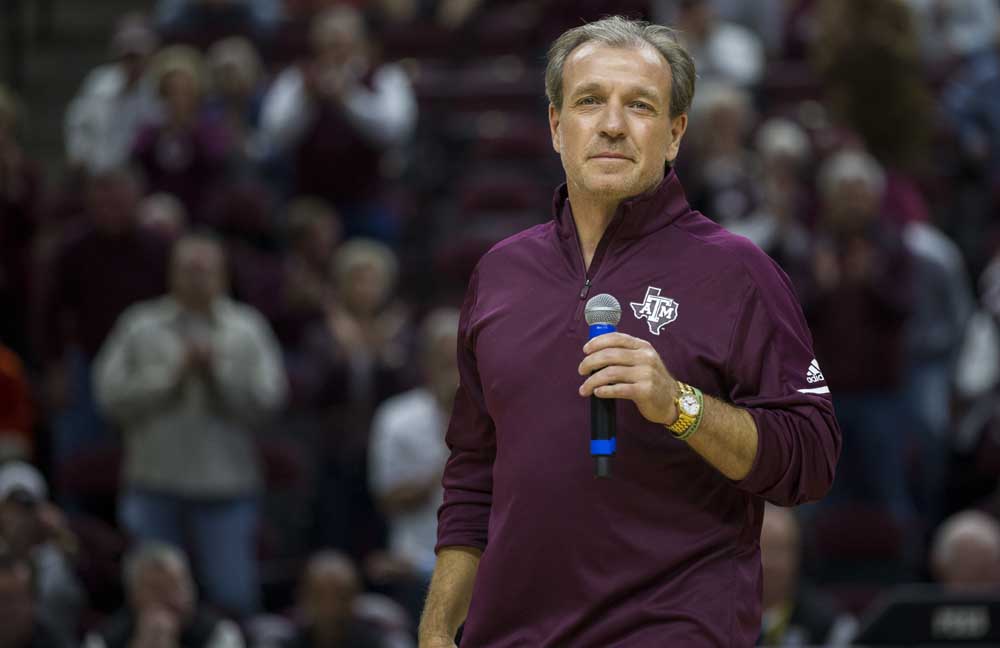The real risk of Jimbo Fisher’s massive contract with Texas A&M
Published 11:59 pm Sunday, December 10, 2017

- Fisher
COLLEGE STATION, Texas — Texas A&M is not afraid of commitment.
That was apparent long before the Aggies used a 10-year, $75 million guaranteed contract to reel in Jimbo Fisher, the richest contract ever given to a college football coach.
Whether it is joining the SEC spending $483 million to rebuild Kyle Field, A&M has made bold investments into its athletic program. One could argue that those moves are the reasons the Aggies made the move for Fisher and handed him an unprecedented, guaranteed contract.
But the latest expenditure leaves no gray area for the Aggies to decide if Fisher’s contract is worth the money, according to University of Miami associate professor Windy Dees.
“With this deal, it’s championship or bust,” said Dees, an A&M graduate who specializes in sports marketing and sponsorship.
Dees said the risk involved comes with the length of the term and the guaranteed money attached with it, especially given the market. A&M was recently one of a few schools to pay a coach eight figures to get out of a bad contract. The Aggies gave Kevin Sumlin $10.4 million, an amount due within 60 days of when A&M fired him, according to an agreement between the two schools.
The reason the Aggies are able to afford these spending habits is that they have a rabid fan base in a state that loves football.
“No state takes football and winning in football more seriously than Texas,” Dees said. “That’s their bread and butter.”
According to USA Today, Texas A&M and the University of Texas were first and second in the country, respectively, in total athletic revenue for the 2015-16 school year, with football being the driving factor. Almost $100 million of the Aggies’ $194.3 million in revenue was generated by the football program, according to the A&M report obtained by The News through an open records request.
When it comes to paying coaches, Texas schools are among the leaders. A&M, Texas and TCU were ranked among the top 10 in annual coaching salaries in 2017, per USA Today.
A&M will probably move up in the next year’s ranking with Fisher’s contract. The Aggies are paying him $7.5 million a year, which currently trails only Alabama’s Nick Saban and Clemson’s Dabo Swinney.
Fisher’s salary is being paid entirely by A&M boosters, the school has said. But even if no state funds are used, the massive amount made A&M administrators pause, even though they were on the verge of hiring one of four active coaches who have won a national championship.
A&M president Michael Young said there is always angst when spending money, especially in this amount.
“The questions you ask (are) what you really need to be successful, what is going to be the return on that investment for the institution, not only financial returns but other returns,” Young said.
When Miami appeared on ESPN’s College GameDay earlier this year, the three-hour show broadcast from the Hurricanes’ campus made Dees and her programs a bit more popular.
As the director for the university’s sports administration graduate program, she said she receives roughly 70 applications a year. After the ESPN appearance that resulted from Miami’s run to the ACC championship game, Dees said she received 15 to 20 applications the next school day.
This shows why universities tend to spend lots of money on successful athletics programs, even if it means coaches are making tens of millions more than administrators and professors.
“A successful football program has a huge impact all over the university, even in terms of students applying,” A&M chancellor John Sharp said. “It has a monumental effect that you can’t ignore.”
From fall 2011 — A&M’s last year in the Big 12 Conference — to this semester, the total enrollment of A&M’s College Station campus has jumped from 49,861 to 62,803.
Since joining the SEC, Sharp and the Aggies have seen other ways athletic success benefits a university. After the Aggies finished fifth in the country in 2012 and Johnny Manziel won the Heisman Trophy, A&M signed off to rebuild Kyle Field. That year, tax records show, A&M’s 12th Man Foundation raised $255.7 million in donations.
After Fisher’s introductory news conference, Young said roughly $5 million of athletic revenue was donated back to the academic side of the university. And no matter the amount, many questions are asked, whether it is spending $75 million or $75.
But inevitably, A&M decided the investment was worth it in order to secure someone of Fisher’s caliber.
“You want to take a challenge in which people behind you are as committed as you are, and I believe they are here,” Fisher said last Monday.






